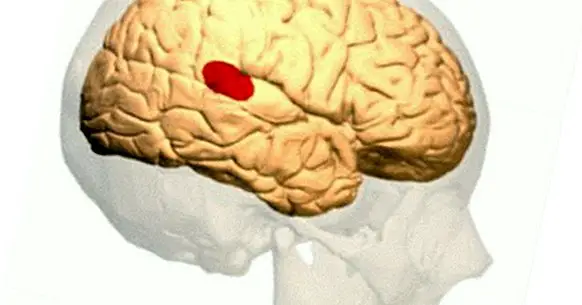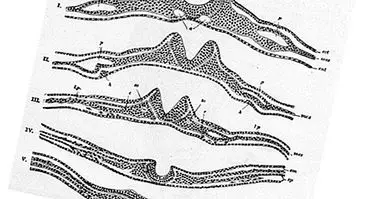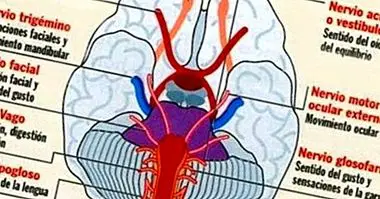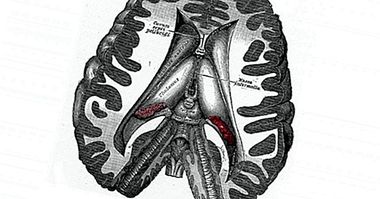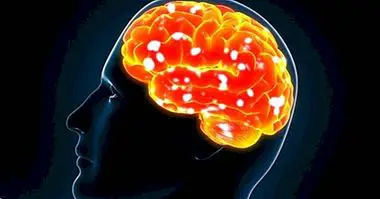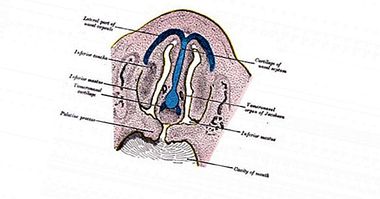Wernicke area: anatomy, functions and disorders
Although the localizationist vision that attributes the understanding of language to the area of Wernicke, a region located in the temporal lobe, has prevailed since the end of the 19th century, in recent years the scientific community is demonstrating that the nervous complexity of this characteristically human function is very much greater than what was believed.
In this article we will describe the Anatomical structure and functions of the Wernicke area . We will also talk about the most distinctive symptoms of the linguistic disorder associated with injuries in this region of the brain: Wernicke's aphasia, also called "sensory" or "receptive".
- Maybe you're interested: "Aphasias: the main language disorders"
Anatomy and structure of the Wernicke area
The Wernicke area is a region of the brain that it is situated in the posterior part of the superior temporal gyrus of the dominant hemisphere , usually the left, with a large number of exceptions among left-handed people. The superior temporal gyrus is located near the primary auditory cortex, as well as the outermost parts of this sensory system.
This area of the brain limits the angular rotation of the parietal lobe, which is involved in language, reasoning and memory. Irrigation of blood to the Wernicke region depends on the middle cerebral artery, fundamental for the transport of nutrients to the cortex as a whole.
There is some disagreement about the exact delineation of the Wernicke area. Thus, while many experts consider that it identifies with the anterior part of Brodmann's area 22 of the temporal lobe (involved in the recognition of auditory verbal stimuli according to neurofunctional studies), others place it in the multimodal cortex of the parietal.
- Related article: "Parts of the human brain (and functions)"
Functions of this brain region
This cortical structure was first described by the German neurologist and psychiatrist Carl Wernicke in the year 1874. This author proposed the existence of a link between the brain region to which his name would be given and the production and imitation of oral language. His hypothesis was based on the analysis of lesions in the superior temporal gyrus and its associated signs.
From this milestone in the field of neuroanatomy, it began to consolidate the localizationist vision that attributes the receptive language (that is, the auditory understanding of speech) to Wernicke's area. From this point of view, the region is considered the brain center for language comprehension , or at least a very relevant structure in this function.
Among the cognitive functions that were related to Wernicke's area throughout the 19th and 20th centuries, we find the semantic processing of linguistic information (both in auditory and written format), the recognition of language and its interpretation.
Recent research on language
It's important to mention the relationship between Wernicke's area and Broca's , located in the forebrain and traditionally associated with the production of language. For a long time it has been believed that the two regions are connected through a set of nerve fibers called the "arched fascicle".
However, we now know that in fact the arcuate fascicle connects Wernicke's area with the premotor and motor cortex in general, and not only with Broca's area; In any case, the uncinated fascicle would be responsible for this interaction. More relevant still are the discoveries about the functions of these two regions.
While language understanding has traditionally been attributed to Wernicke's area, recent studies with neuroimaging suggest that this region could be more involved in the production of speech . Paradoxically, nowadays it is also believed that the area of Broca can be related mainly to the understanding of language and not to its production.
In any case, it is important to note that brain functions are not usually located in a single brain structure. In the same way, language is a very complex function in which large regions and networks that involve mainly, but not exclusively, the frontal and temporal lobes fulfill important roles.
Symptoms of Wernicke's aphasia
Frequently, lesions in the temporal lobe of the dominant hemisphere of the brain cause a language disorder that has been given the name of "Wernicke's aphasia" because of its relationship with the area that concerns us.This alteration has also been called "sensory aphasia", "receptive", "understanding" and "fluid" based on its defining characteristics.
People with Wernicke's aphasia have difficulty understanding other people's speech. In addition, and despite being fluid and well articulated, his speech is often meaningless and full of paraphasias , or substitutions of phonemes by similar ones. These alterations also occur in the written language, which shares a cerebral basis with the spoken one.
The similarity of the symptoms of Wernicke's aphasia with the language alterations that occur in the context of schizophrenia is striking. Thus, in both disorders we find phenomena such as neologisms (words without shared meaning) and the lack of coherence of sentences (schizoafasia, paragramatismo or salad of words) .
- Related article: "Wernicke aphasia: description, symptoms and causes"

